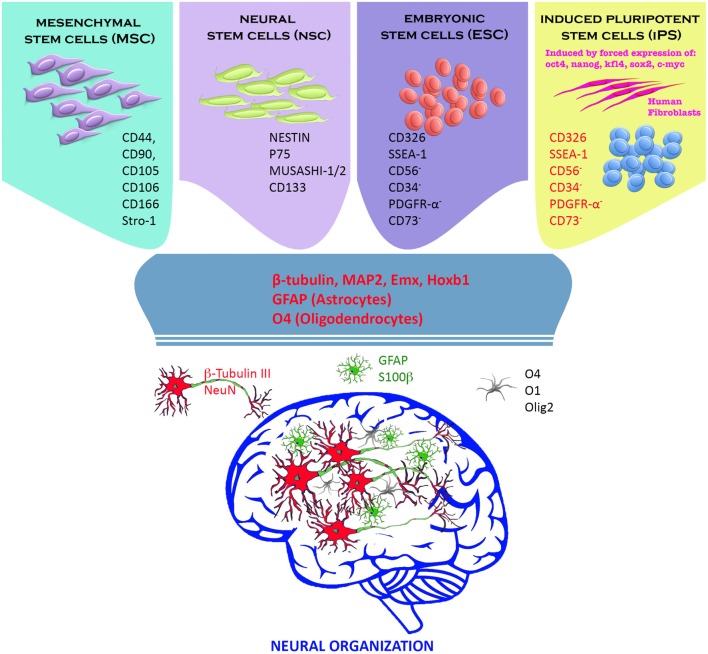Figure 1.
Stem cells and neural progenitor cells have been used to replace neural tissue death following a cerebral insult. Adult (mesenchymal and neural stem cells) and embryonic stem cells (ESCs) exhibited excellent differentiation capacity toward the neural phenotypes (neurons, oligodendrocytes, and astrocytes) in vitro and in vivo. In our view instead, induced pluripotent stem cells (iPSCs) constitute the greatest prospect for a future cell therapy. iPSCs are derived directly from the patient’s connective tissue through a small biopsy and exhibit the same properties of ESCs, overcoming the problems related to immune rejection, and bypassing the need for embryos. They can be generated in a patient-matched manner, implicating that each individual could have their own pluripotent stem cell line. Finally, iPSCs can be used in personalized drug discovery and to understand and deepen the patient-specific basis of disease (7–10).

